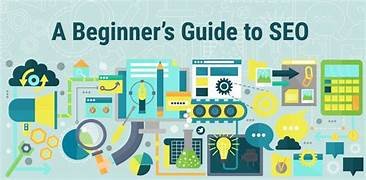Why SEO Best Practices for Beginners Are Important?
SEO (Search Engine Optimization) is a crucial digital marketing strategy that helps websites rank higher on search engines like Google, increasing visibility, traffic, and credibility. For beginners, understanding SEO best practices is essential to building a strong online presence and attracting the right audience.
🔹 Improves Website Visibility: Proper SEO techniques help your website appear in search results when users look for relevant topics.
🔹 Drives Organic Traffic: Instead of relying on paid ads, SEO brings consistent, free traffic from search engines.
🔹 Enhances User Experience: Optimizing site speed, mobile responsiveness, and content improves engagement and reduces bounce rates.
🔹 Boosts Credibility & Authority: Websites that rank higher are seen as more trustworthy and authoritative.
🔹 Long-Term Benefits: Unlike paid ads that stop generating traffic once the budget runs out, SEO continues to deliver results over time.
By following SEO best practices, beginners can create optimized content, improve website performance, and establish a solid foundation for long-term success in digital marketing.
Step-by-Step Guide to SEO Best Practices for Beginners
Step 1 – Keyword Research for SEO Success
Keyword research is the foundation of SEO best practices for beginners. Choosing the right keywords ensures that your content reaches the right audience.
How to Conduct Keyword Research:
-
- Use tools like Google Keyword Planner, Ahrefs, or Ubersuggest to find high-traffic keywords.
-
- Focus on long-tail keywords (e.g., “best SEO strategies for beginners”) for better search intent matching.
-
- Analyze keyword difficulty and competition to select the most effective terms.
-
- Integrate keywords naturally into your content, avoiding keyword stuffing.
Step 2 – On-Page SEO Optimization for Better Rankings
On-page SEO improves the structure and content of your website, making it easier for search engines to crawl and rank your pages.
Essential On-Page SEO Elements:
-
- Title Tags: Keep them under 60 characters and include the primary keyword.
-
- Meta Descriptions: Write compelling, keyword-rich summaries under 160 characters.
-
- Header Tags (H1, H2, H3): Use structured headings to enhance readability and SEO.
-
- Image Optimization: Add alt text with relevant keywords and compress images for faster loading.
-
- Internal Linking: Connect related content on your website to improve navigation and engagement.
Step 3 – The Importance of Website Speed and Mobile Optimization
Google prioritizes fast, mobile-friendly websites in search rankings. A slow or unresponsive site can lead to higher bounce rates.
How to Improve Website Speed & Mobile-Friendliness:
-
- Use Google PageSpeed Insights to identify performance issues.
-
- Compress images using tools like TinyPNG or ImageOptim.
-
- Enable browser caching and a Content Delivery Network (CDN) for faster loading times.
-
- Test your site’s mobile compatibility with Google’s Mobile-Friendly Test.
Step 4 – Content Strategy for SEO: Creating High-Quality Content
Content is a key ranking factor in SEO. Google rewards valuable, informative, and user-friendly content.
Best Practices for SEO Content:
-
- Write long-form content (1,000+ words) to provide in-depth information.
-
- Answer search intent by addressing common user questions.
-
- Use a conversational tone and simple language for better readability.
-
- Update old blog posts regularly with new keywords and fresh insights.
Step 5 – How to Build Quality Backlinks for SEO
Backlinks from authoritative websites boost your domain authority and improve search rankings.
Effective Link-Building Strategies:
-
- Guest Blogging: Write for reputable websites and earn backlinks.
-
- Broken Link Building: Find broken links on other sites and offer your content as a replacement.
-
- Create Shareable Content: Publish guides, infographics, or research that others want to link to.
-
- Avoid spammy backlink tactics like buying links, which can lead to penalties.
Step 6 – Technical SEO Basics for Beginners
Technical SEO ensures search engines can crawl and index your website properly.
Technical SEO Checklist:
-
- Submit an XML Sitemap to Google Search Console.
-
- Optimize URL structures (e.g., “yourwebsite.com/seo-tips”).
-
- Fix broken links and remove duplicate content.
-
- Implement structured data (Schema Markup) to improve search engine understanding.
Step 7 – Tracking SEO Performance and Making Improvements
SEO requires constant monitoring and adjustments. Tracking your results helps you optimize strategies for better rankings.
Best SEO Tracking Tools:
-
- Google Analytics – Monitor traffic, user behavior, and bounce rates.
-
- Google Search Console – Track search rankings and fix technical issues.
-
- Ahrefs, SEMrush, Moz – Analyze keyword rankings and backlink profiles.
TOOLS FOR BEST SEO PRACTICES TO DO
Tools to Use:
Google Analytics – Track traffic, bounce rates, and user behavior.
Google Search Console – Monitor search rankings and fix errors.
Ahrefs, SEMrush, Moz – Analyze keyword rankings and backlink profiles.
Final Thoughts
SEO is a long-term strategy, but by following these best practices, beginners can build a strong foundation for success. Focus on keyword research, high-quality content, technical optimization, and continuous monitoring to improve your rankings and attract more organic traffic.

